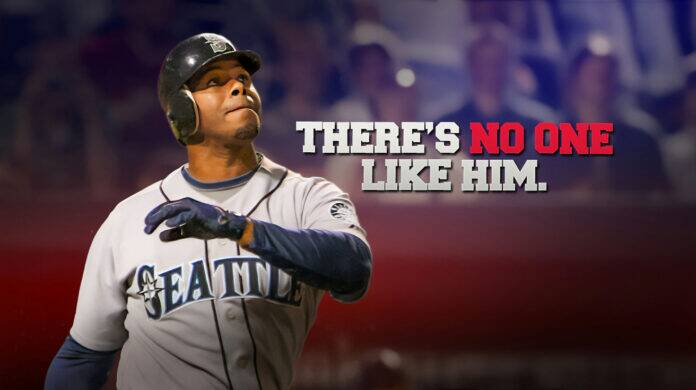
October 8, 1995. Bottom of the 11th inning. Ken Griffey Jr. sprinting home like his life depends on it, sliding into immortality as Edgar Martinez’s double saves Seattle baseball. That moment? Pure cinema—better than any Marvel ending because it actually happened. This was Griffey’s superpower: turning regular Tuesday nights into legend-making theater. Before social media could manufacture viral moments, The Kid created them through pure, ridiculous talent that made even your baseball-hating friends stop scrolling and pay attention. From teenage phenom to injury-plagued veteran, his story reads like someone fed ChatGPT every sports movie ever made.
High School Phenom Sets the Stage
You don’t become baseball royalty by accident. At Moeller High School outside Cincinnati, young Griffey wasn’t just impressive—he was otherworldly, crushing a .478 batting average with 17 home runs in his senior season. Professional scouts packed the stands like paparazzi, watching a teenager whose swing looked like it was designed by NASA engineers.
While other prep stars generated buzz, Griffey’s combination of raw talent and baseball DNA set him apart. This wasn’t just another power hitter or speedster—this was a complete package wrapped in natural charisma that made even cynical scouts believers. Kid was basically the iPhone of baseball prospects: expensive, revolutionary, and everyone knew they needed one.
Seattle’s Franchise-Altering Gamble
The 1987 MLB draft handed the Seattle Mariners a franchise-defining choice. Despite psychological evaluations suggesting Griffey might crack under professional pressure, Seattle selected him first overall. For a team that had never posted a winning season since 1977, this wasn’t just drafting talent—this was swinging for salvation.
The Mariners needed more than a good player; they needed a messiah for a city that had never tasted baseball success. Griffey represented hope personified, the kind of generational talent that could transform losing into winning overnight. Seattle was basically swiping right on their soulmate—risky, expensive, but potentially life-changing.
Dark Struggles Behind the Smile
January 1988 revealed the human side behind the superstar facade when Griffey attempted suicide by swallowing nearly 300 aspirin pills. The crushing weight of living up to his father’s legacy, combined with typical teenage pressures, had pushed him to the breaking point.
This deeply personal crisis shaped everything that followed—making him simultaneously more private with media yet more genuine with fans, especially kids. His vulnerability created a depth that perfectly polished superstars rarely achieve. Think of it as the anti-influencer approach: real struggles creating authentic connection instead of manufactured relatability.
Rookie Season Rewrites Expectations
Griffey’s 1989 debut didn’t just announce his arrival—it shattered preconceptions about what teenagers could accomplish in the majors. His first-pitch double off Oakland’s Dave Stewart signaled this wasn’t some prospect needing seasoning time.
By season’s end, his .264 average with 16 homers and 61 RBIs proved he belonged from day one. His Upper Deck rookie card became the era’s most coveted collectible—basically the Pokemon card of the sports world. The previously empty Kingdome suddenly drew crowds when Griffey played, like he had some algorithm perfectly designed to generate excitement.
Baseball’s Ultimate Father-Son Story
August 31, 1990, delivered something unprecedented: Ken Griffey Sr. and Jr. as teammates. Their back-to-back home runs on September 14th against the Angels created pure baseball poetry that still gives fans goosebumps.
Father-son combinations remain extraordinarily rare in professional sports, but none have matched the Griffeys’ simultaneous excellence. Senior’s clubhouse presence accelerated Junior’s development, providing a masterclass in professionalism that transformed him from phenom to polished superstar.
The Decade That Belonged to Junior
The 1990s weren’t just Griffey’s prime—they were his personal playground. Seven consecutive All-Star appearances, four home run titles, and the 1997 MVP award tell only part of the story. His cultural dominance proved even more remarkable.
From 1991-1999, Ken Griffey outpaced contemporaries in virtually every offensive category. His Nintendo game became a bestseller—imagine if LeBron James had his own Call of Duty franchise. The backward cap and million-dollar smile created appeal that crossed every demographic boundary, achieving pre-social media cultural saturation that modern athletes need millions of followers to match.
The Swing That Redefined Perfection
Baseball swings are like fingerprints—uniquely individual. Griffey’s left-handed stroke exists in its own category, a perfect marriage of technical efficiency and artistic beauty. The mechanics begin with a subtle weight shift backward, coiling like a spring before unleashing devastation.
His quick hands through the zone generated bat speed that remains the gold standard for hitting coaches. The high, one-handed follow-through completed baseball’s equivalent of the Mona Lisa—if Da Vinci had been obsessed with launch angles. Current stars like Juan Soto still study Griffey footage like film students analyzing Scorsese, chasing even a fraction of that effortless power.
Defensive Artistry in Center Field
Griffey didn’t just patrol center field—he transformed it into his personal art gallery. His 1995 wall-climbing catch against Kevin Bass defied physics, scaling the Kingdome like he’d discovered loopholes in gravity’s rulebook.
Advanced metrics reveal his true defensive value: between 1990-1999, he saved approximately 175 runs with his glove, equivalent to nearly 18 additional wins. His 10 Gold Gloves barely capture how he revolutionized outfield play from secondary skill to high art—like turning customer service into performance poetry.
The Slide That Saved Seattle Baseball
October 8, 1995, stands as the moment Griffey transcended from star to legend. His mad dash home on Edgar Martinez’s double to defeat the Yankees in the ALDS created baseball’s perfect climactic scene.
The context amplifies everything—Seattle faced elimination and potential relocation, with ownership threatening to move without a new stadium. Griffey’s slide didn’t just advance them in the playoffs; it literally saved baseball in Seattle, securing funding for what became T-Mobile Park.
Statistical Milestones Without Asterisks
Griffey’s 630 career home runs place him seventh all-time, achieved without performance-enhancing drug shadows that haunt many contemporaries. His memorabilia commands premium prices precisely because of this untarnished legacy.
A game-used bat from his 1997 MVP season recently sold for $63,000, outpacing similar items from Mark McGwire and Sammy Sosa—turns out clean reputations age like fine wine while steroid scandals age like milk. His back-to-back 56-home run seasons (1997-1998) remain one of baseball’s most underappreciated accomplishments, overshadowed by the pharmaceutical circus that followed.
The Homecoming That Broke Hearts
Cincinnati welcomed their prodigal son home in 2000 with messianic expectations. The nine-year, $116.5 million contract signaled the city’s ambition to build around baseball’s brightest star. What followed became the sport’s cruelest irony.
The player whose body seemed indestructible in Seattle suddenly became fragile. Between 2001-2004, Griffey played just 317 of 648 possible games, his hamstrings betraying him with alarming regularity. Made $116 million and spent half his contract on the disabled list—that’s worse ROI than investing in Blockbuster stock. The Cincinnati years transformed his narrative from inevitable all-time great to baseball’s greatest “what if” story.
Full Circle Return to Seattle
Griffey’s 2009 return to Seattle offered something rare in professional sports—the chance to complete an unfinished story. Though physically diminished, his presence provided emotional closure for fans who never recovered from his departure.
His retirement on June 2, 2010, came with characteristic understatement—a simple press release rather than farewell tour. No drama, no documentary series, just peace out. His Cooperstown induction featured unprecedented recognition: 99.3% of Hall of Fame votes, then the highest percentage in history. The backward cap on his plaque provided the perfect final note—staying true to the kid who just loved playing ball.
Lasting Influence on Modern Baseball
Griffey’s legacy extends beyond statistics into pure influence. His impact on baseball’s aesthetic—from equipment design to playing style—remains visible today. The Nike Swingman line he pioneered transformed how baseball marketed individual players.
His signature gloves still rank among youth baseball’s bestsellers—the Jordan 1s of baseball equipment. More importantly, Griffey helped transform baseball’s racial dynamics, making the sport more appealing to young Black athletes when basketball and football were stealing talent faster than a crypto rug pull.
Cultural Icon Beyond the Diamond
Few athletes have penetrated popular culture as thoroughly as peak Griffey. His “Ken Griffey Jr. Presents Major League Baseball” for Super Nintendo outsold traditional sports games—kid was basically the first athlete to understand brand synergy before everyone had a podcast. His Nike campaigns established athlete marketing templates brands still copy-paste today.
His “The Simpsons” cameo in the classic “Homer at the Bat” episode cemented mainstream recognition—imagine if Aaron Judge appeared in “Rick and Morty” tomorrow. Beyond entertainment, his charitable foundation has provided millions for children’s hospitals and educational initiatives, creating cultural footprints resembling modern stars like Steph Curry.
The Perfect Embodiment of Baseball’s Soul
In baseball’s sprawling history, perhaps no player better embodied both its soaring possibilities and crushing heartbreaks than Kenneth Griffey Jr. Like a perfectly executed double play, his career combined technical brilliance with artistic grace.
The first half showed us baseball’s ceiling—what the perfect player might look like. The second half reminded us of the game’s inherent fragility. Through it all, The Kid maintained the pure joy that drew him to baseball: playing a child’s game extraordinarily well, before analytics and social media sucked the fun out of everything.


